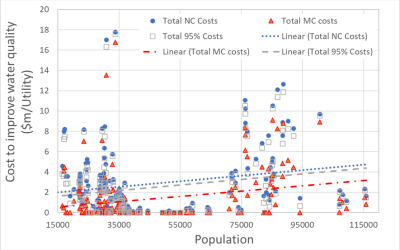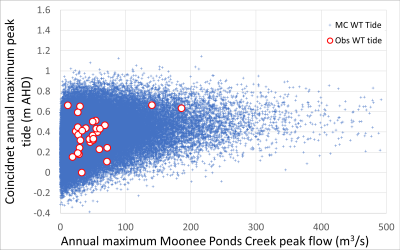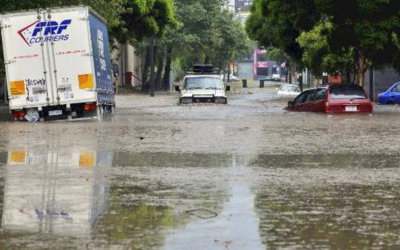SYSTEMS PERSPECTIVE ON CHARACTERISING RESILIENCE IN URBAN WATER MARKETS
Peter J Coombes
Published at OzWater 22 in Brisbane
The accumulated data and systems analysis from the last two decades was utilised with systems analysis of options to gain insights into the resilience of the water resources systems servicing Greater Melbourne and Sydney. Utility water services in both cities have been subject to droughts, floods, fires, economic shocks and pandemic. The similar total dam storage volumes for Mebourne and Sydney displayed different resilience to changes in population and weather. Sydney’s storage levels were more variable and demonstrated greater recovery than Melbourne’s storages that remained at persistently low levels until the recent constant inputs from desalination.
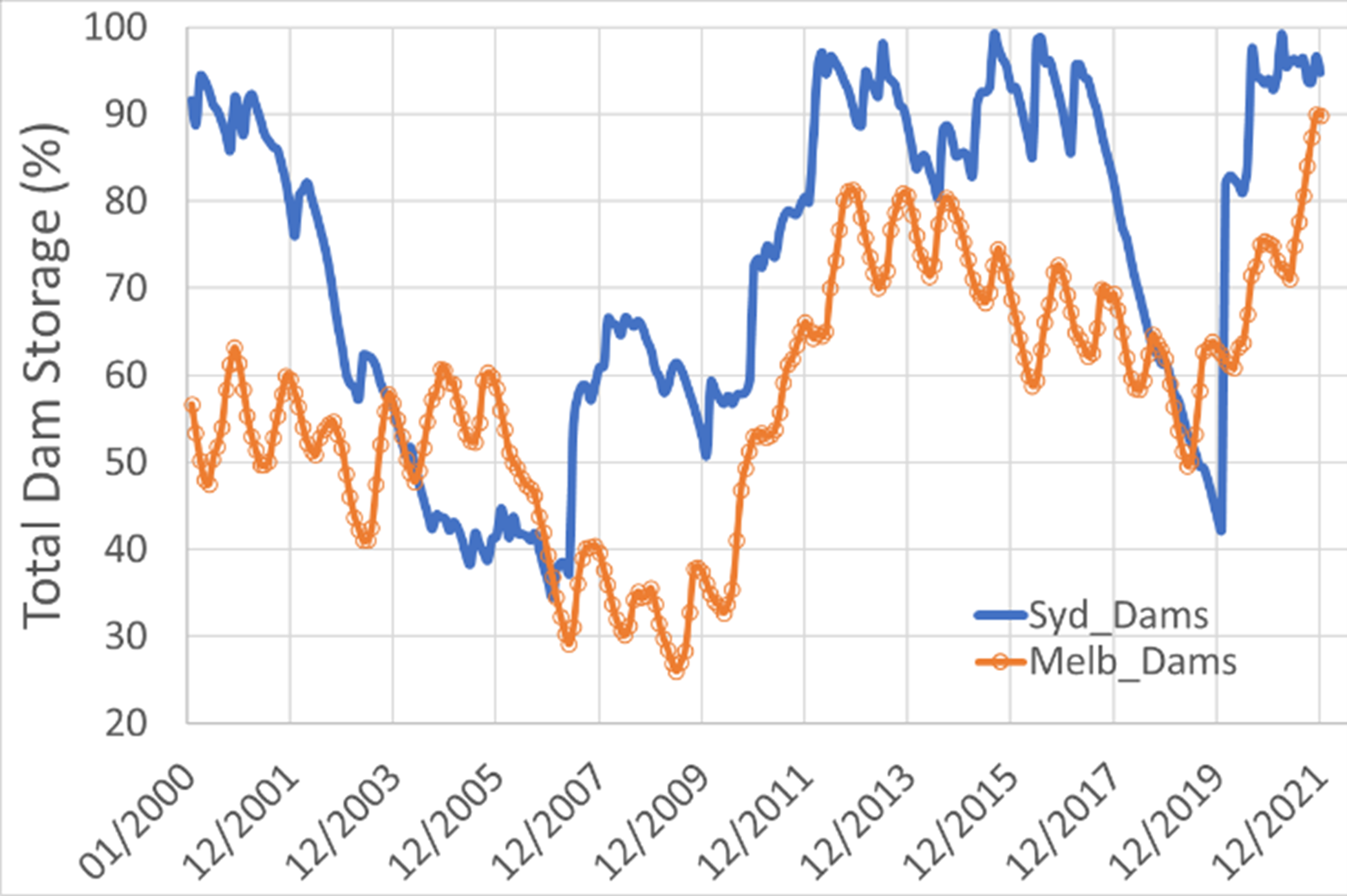
Sydney and Melbourne dam levels
These persistently low dam levels in Melbourne may have prompted greater demand management responses in households.Sydney experienced higher and more variable rainfall than Melbourne which increases the impact of distributed water sources and water effiency. Water restrictions, distributed water sources and efficiency significantly mitigated water demands and drawdown of dam levels for both cities. Water demands in Melbourne were more responsive to these measures than Sydney.
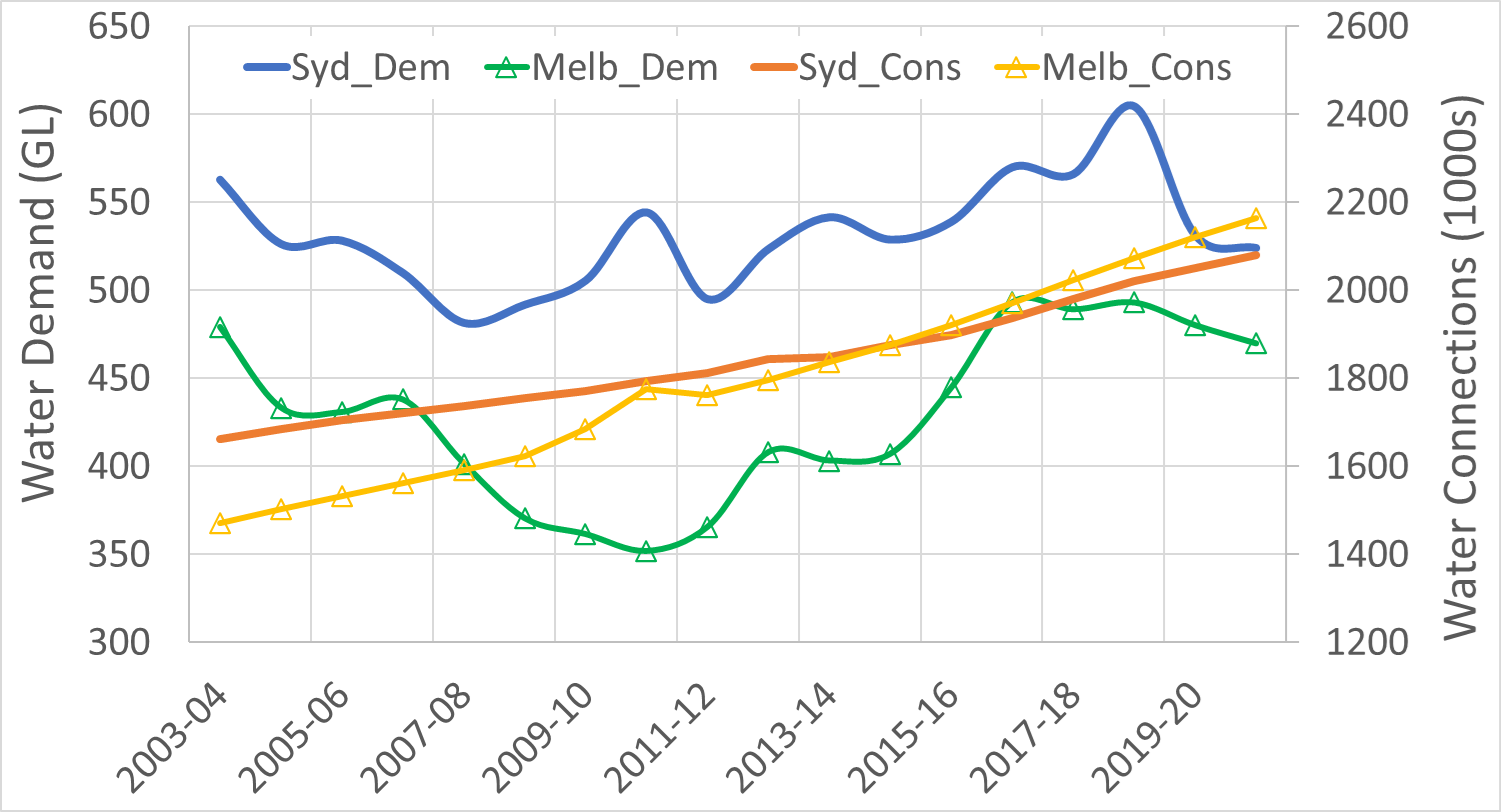
Water demand and growth in water connections
These differences could be attributed to pricing policy where total household utility bills in Sydney include higher proportions of fixed charges with lower variable tariffs in the context of higher disposable income. Real increases in utility costs and household utiity bills were substantially higher in Melbourne (70%, 60%) than Sydney (49%, 8%). There is a significant difference in household welfare.
Sydney experienced higher and more variable rainfall than Melbourne which increases the impact of distributed water sources and water effiency. Water restrictions, distributed water sources and efficiency significantly mitigated water demands and drawdown of dam levels for both cities. Water demands in Melbourne were more responsive to these measures than Sydney. These differences could be attributed to pricing policy where total household utility bills in Sydney include higher proportions of fixed charges with lower variable tariffs in the context of higher disposable income. Real increases in utility costs and household utiity bills were substantially higher in Melbourne (70%, 60%) than Sydney (49%, 8%). There is a significant difference in household welfare.
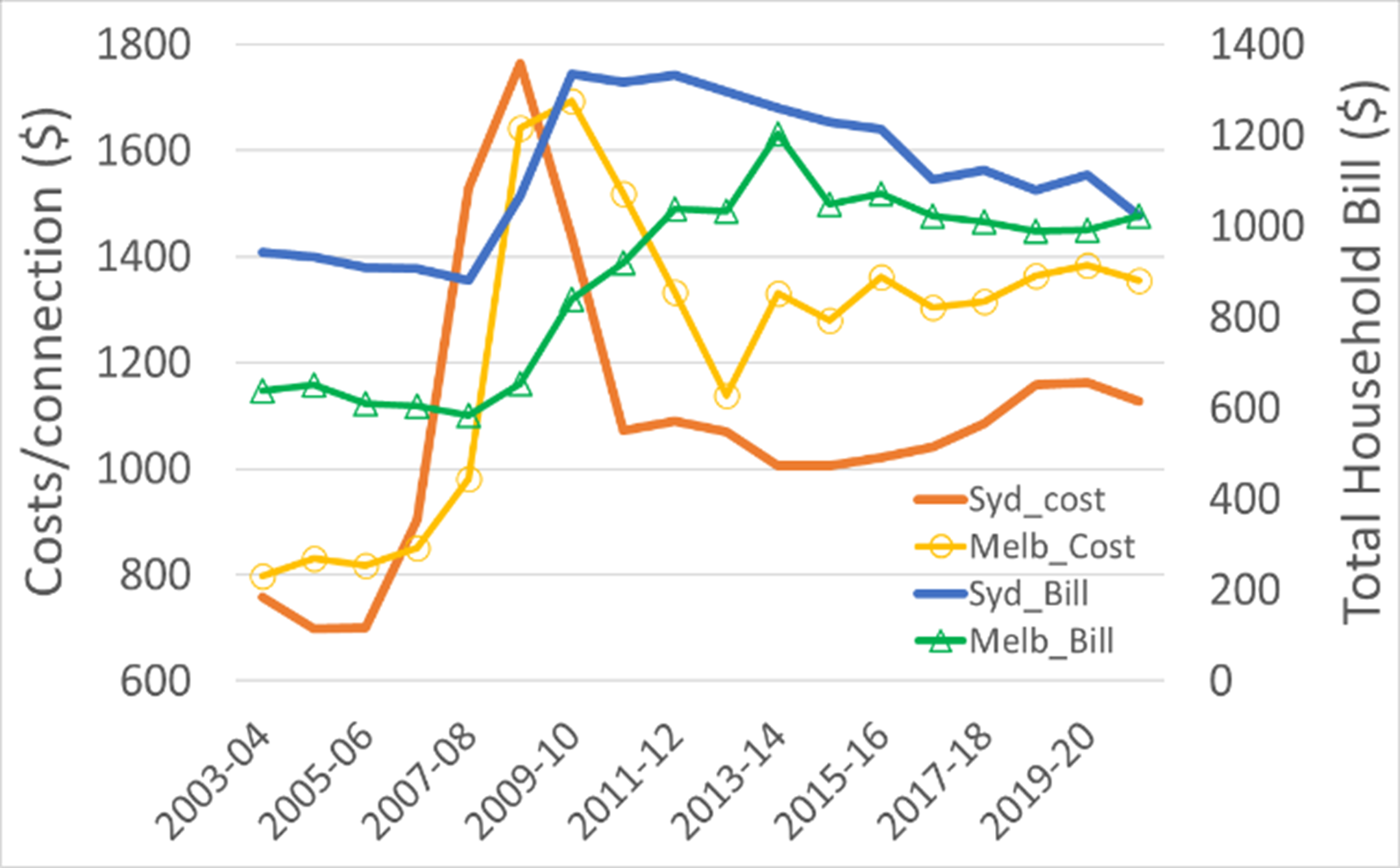
Costs and prices of water services
Higher spatial costs of utility water and sewage services ($2 – $24/kL) than Melbourne ($2 – $11/kL). Both cities experience the highest utility servicing costs in the growth coridors and location distant from sources of water or wastewater treatment. Melbourne also has relatively higher utility servicing costs for high density inner city areas.
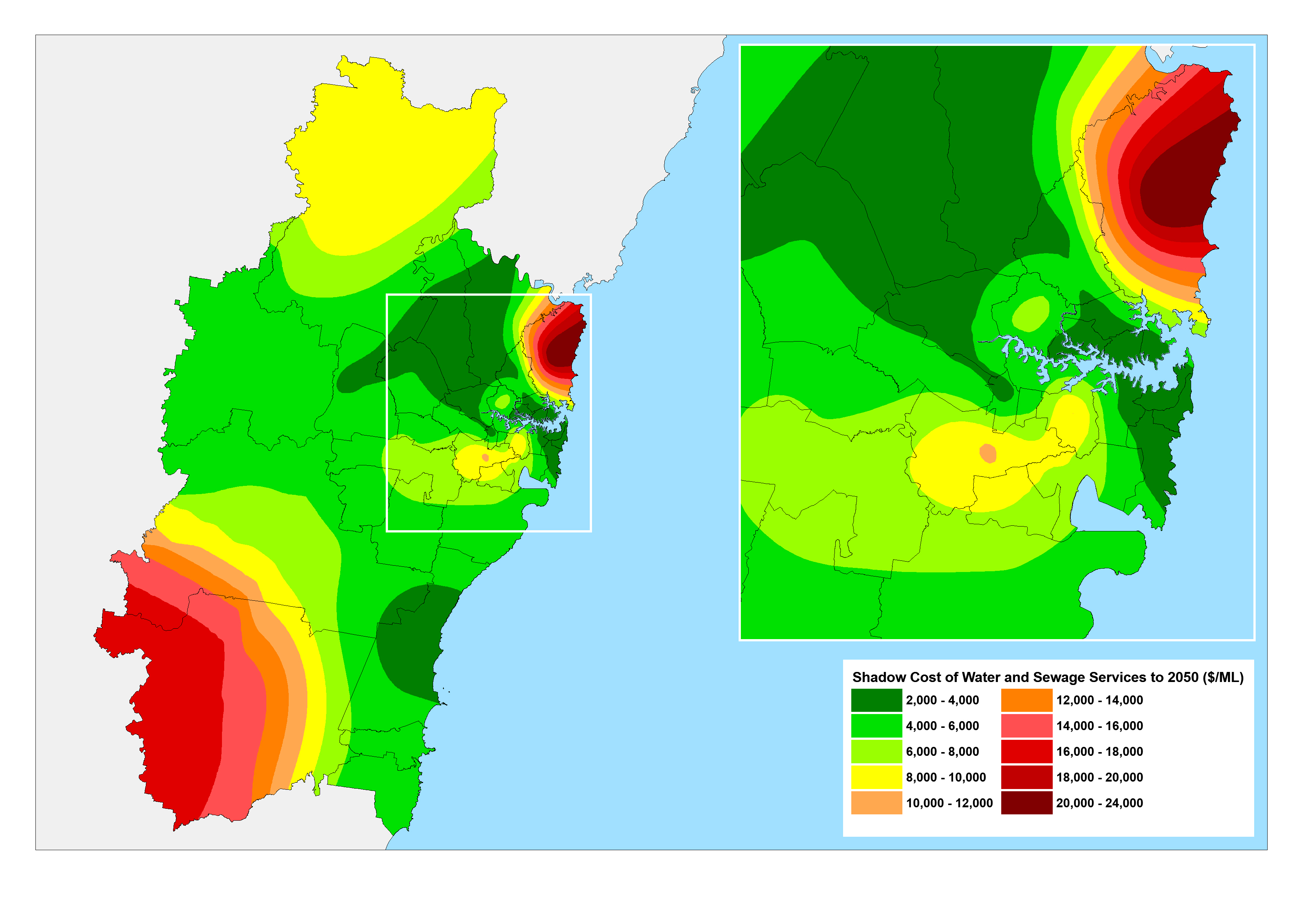
Spatial costs of water and sewage services across Greater Sydney
These high density impacts are mitigated by greater water efficiency and alternative water sources in Sydney. The urban water market includes similar proportions (probably greater than 30%) of supplementary (non-utility) water sources and conservation in both regions. Changes to pricing policy and policies supporting higher water efficiency is expected to produce significant reductions in future utility water demands and costs. Greater impacts on diminished demands are expected for Melbourne and higher reductions in costs for Sydney.
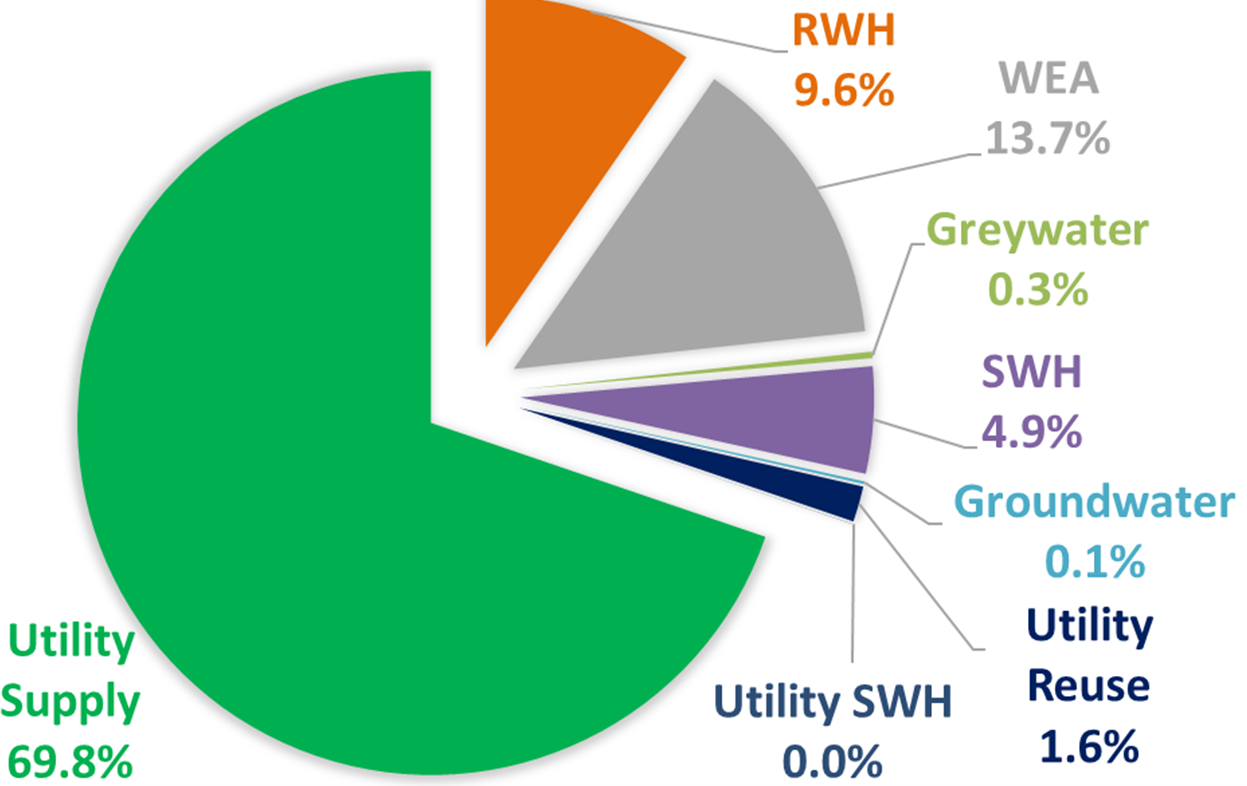
Urban water market for Melbpourne (circa 2021)
This study has revealed that the key resilience parameters are distributed water sources and conservation in an urban water market, government policy and pricing strategies, household welfare, total dam storage and supply of desalinated water. These parameters have different levels of impact and signicance across the two cities. Further investigation can reveal the extent and benefits of these parameters.
The full paper is available here: Full paper



